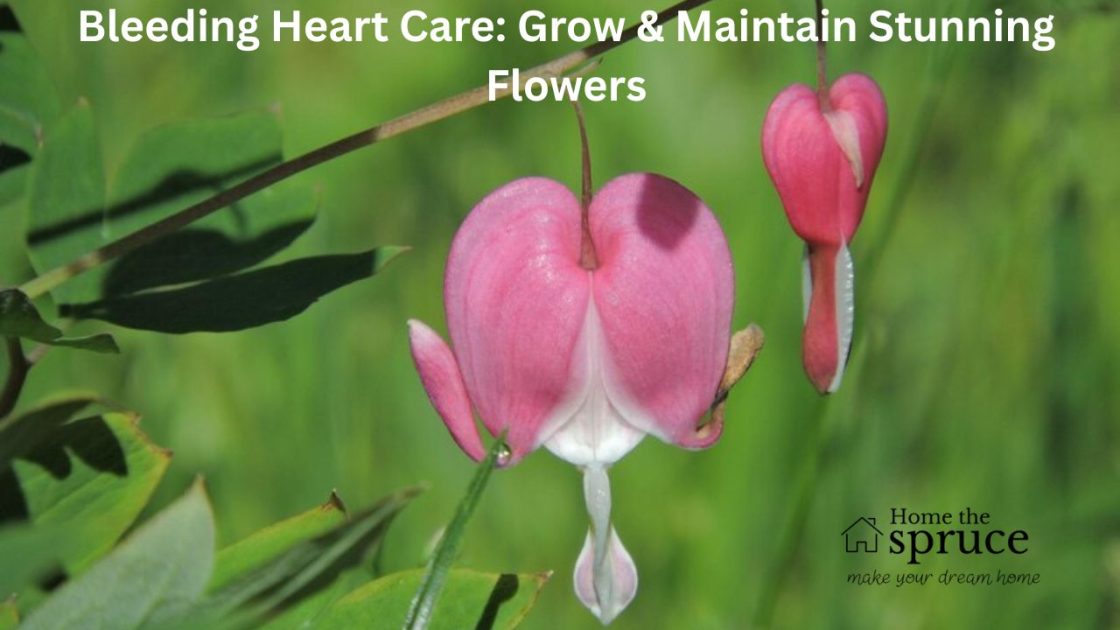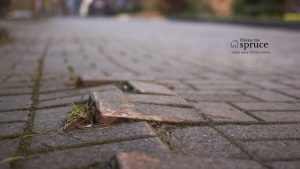The bleeding heart plant is a show-stopper in gardens and homes. With its charming, heart-shaped flowers, the plant adds a romantic touch wherever it grows. Whether you’re a gardening pro or just getting started, you’ll find that caring for bleeding hearts is simpler than you might think. Let’s break things down step by step, so you can keep your plant as happy and healthy as possible.
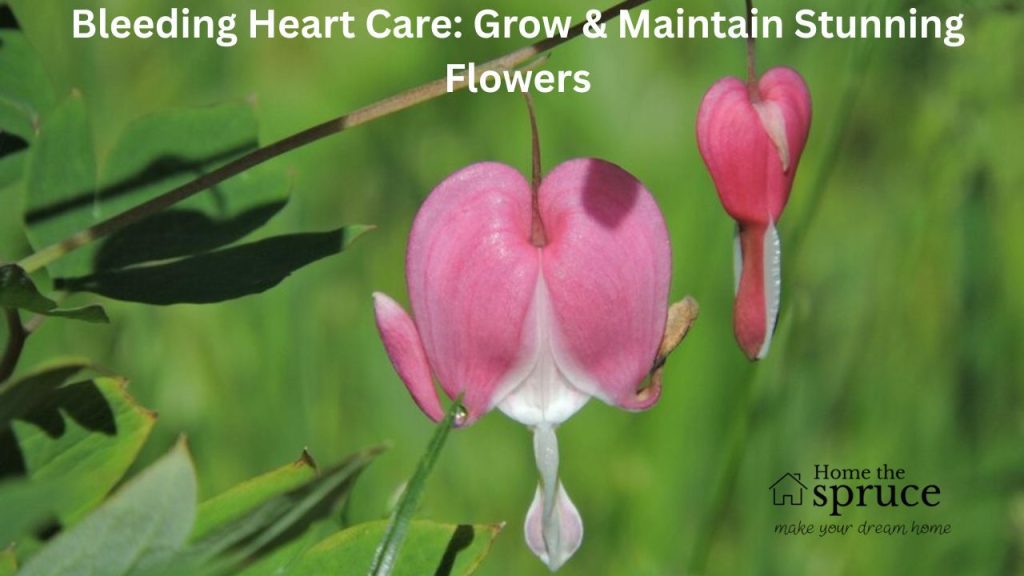
Planting
Planting bleeding hearts is the foundation of their success. These plants thrive in the right spot, and getting them started sets the tone for their growth.
- Choose a Shady Spot: Bleeding hearts love shade or partial shade. Think of places under trees or along north-facing walls. Direct sunlight will leave them feeling cranky and dehydrated.
- Prepare the Soil: They adore rich, well-draining soil, so mix compost or organic matter into your garden bed. A pH range of slightly acidic to neutral is ideal.
- Planting Time Is Key: The best times for planting bleeding hearts are early spring or fall. Cooler weather helps the roots settle in, making them ready for blooming come spring.
- Follow the 2-Foot Rule: Wondering how big a bleeding heart gets? Their sprawling stems can reach about 2-3 feet high and wide, so give them space to spread out.
Light
Bleeding hearts prefer indirect, dappled sunlight. They shine brightest in shady areas but can tolerate some morning sun. Too much harsh sunlight, especially during peak summer hours, can scorch their delicate leaves and flowers. Place them where they get cool light, and you’ll watch them flourish.
Soil
The bleeding heart bush isn’t picky, but it does have preferences. Rich, loamy soil works best. Think of soil that crumbles when you touch it—not too sandy and not sticky like clay. Adding compost is a great way to keep the ground moist yet not overly wet.
Water
Caring for a bleeding heart plant involves paying attention to watering. They like soil that’s consistently moist but not soggy. Overwatering can lead to root rot, so stick to a “once the top inch is dry” watering schedule. During hotter months, you may need to water more frequently, especially if the soil dries out quickly.
Temperature and Humidity
Bleeding hearts prefer cooler, mild temperatures, thriving in spring and early summer. Once the heat of summer kicks in, you might notice the plant starting to die back. Don’t worry; it’s just going dormant (like a bear snoozing for winter). High humidity doesn’t bother these plants, which makes them a favorite in various climates, from the cool Pacific Northwest to muggy southern gardens.
Fertilizer
While bleeding hearts flower beautifully without much fuss, a little extra help never hurts. Use an all-purpose, slow-release fertilizer in early spring as the plant emerges. Organic mulch, like well-rotted leaves, will also give them some added nutrition. Be careful not to over-fertilize; they’re not heavy feeders.
Types of Bleeding Heart
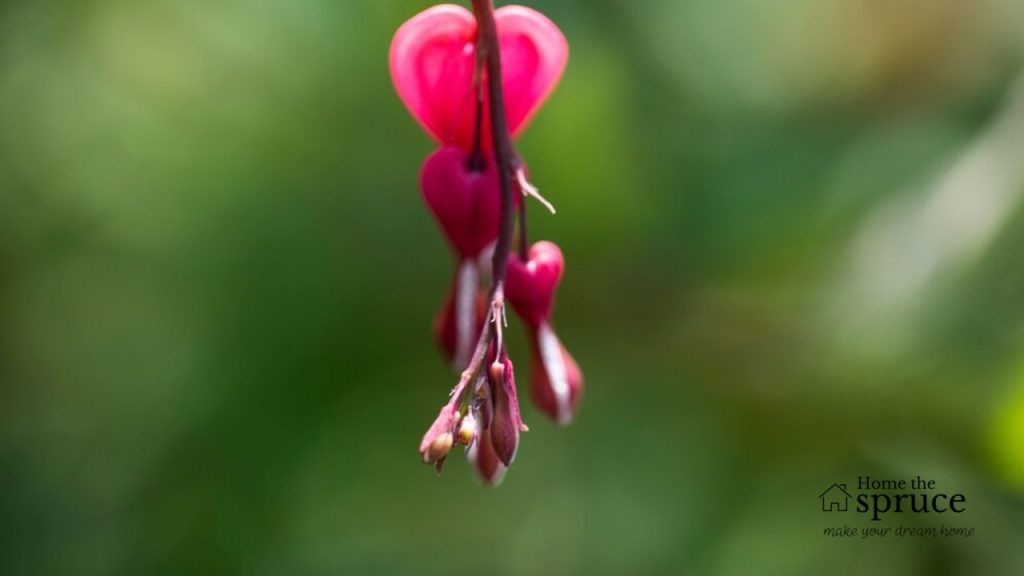
Bleeding hearts come in a range of varieties, each with its own unique charm. Some favorites include:
- Common Bleeding Heart (Lamprocapnos spectabilis): The classic variety with pink-and-white flowers.
- Fern-Leaf Bleeding Heart: This perennial flowers repeatedly, even in summer if happy.
- Alba (White Bleeding Heart): For those who love crisp white blooms.
- Gold Heart: A bold choice with pink flowers and dazzling golden leaves.
- Pacific Bleeding Heart: This native beauty thrives in woodland settings.
Each type has minor differences in size and flower shape, but all offer that swoon-worthy appeal.
Pruning
Pruning bleeding hearts is easy and keeps the plant looking tidy. Once flowering is done, cut back the stems to the ground, especially if they’re yellowing or wilting. This helps redirect the plant’s energy to its roots for the next growing cycle.
Propagating Bleeding Heart
Want more bleeding hearts in your life? That’s totally doable, and you can create new plants using division or cuttings.
Propagation by Division
- Dig up the mature plant in early fall or spring.
- Gently pull apart the roots, separating them into smaller clumps.
- Replant them immediately in new spots, following the usual planting guidelines.
Propagation by Cuttings
- Snip a 3-4-inch section of a healthy stem.
- Dip the cut end into rooting hormone.
- Plant it in moist, warm potting soil and cover it loosely with plastic to retain humidity. Within a few weeks, you should see roots.
How to Grow Bleeding Heart From Seed
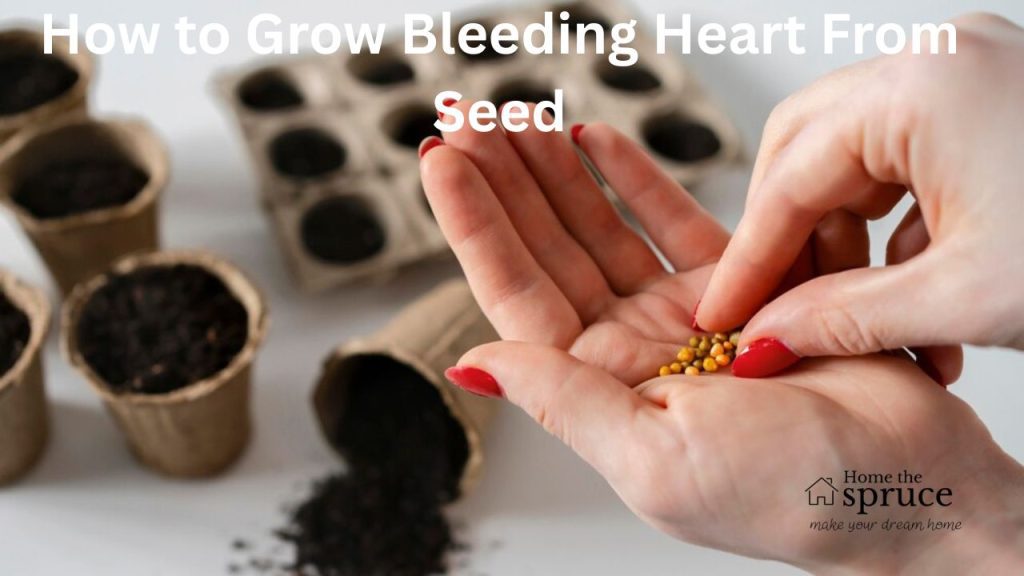
This method takes patience, but it’s perfect for gardeners who enjoy a challenge.
- Collect Seeds: Wait for the flower to dry out and form seed pods. Once the pods start turning brown, gently collect them.
- Chill the Seeds: Bleeding heart seeds need a cold period (stratification). Place them in moist soil inside the fridge for 6-8 weeks.
- Plant: Sow the seeds in a tray filled with moist, sandy soil. Keep the tray in a cool, shaded spot and water lightly. Germination can take weeks, so hang in there!
Potting and Repotting Bleeding Heart
If space is limited, bleeding hearts are happy to live in pots. Ensure the container has good drainage holes and is at least 12-15 inches deep. Repot every 2-3 years when roots become crowded, and refresh the soil mix with nutrient-rich compost.
Overwintering
Winter care for bleeding hearts ensures a strong return in spring. Apply a thick mulch layer around the base to insulate the roots. You don’t need to water during the dormant period unless there’s a dry spell.
Common Pests & Plant Diseases
While bleeding heart plants are resistant to many pests, you might occasionally spot slugs, snails, or aphids. Use neem oil, natural predators like ladybugs, or hand-pick the critters.
Diseases like powdery mildew or root rot usually occur due to overwatering or poor air circulation. Ensure proper spacing and well-drained soil to prevent these problems.
How to Get Bleeding Heart to Bloom
Bleeding heart flowers bloom best when they get the right care. Give them partial shade and nutrient-rich soil, avoid over-fertilizing, and make sure they’re hydrated without being waterlogged. Sometimes cutting back old stems can encourage new flowers!
Common Problems With Bleeding Heart
Even the happiest bleeding hearts can have issues. Here’s how to handle them:
Powdery Patches on Foliage
This signals powdery mildew. Improve airflow around the plant and use a garden-safe fungicide.
Brown or Black Spots on the Leaves
This could be leaf spot, often caused by fungi. Prune affected areas and avoid watering from above to keep leaves dry.
Yellowing Leaves
This might mean the plant is entering dormancy, especially in summer. If it happens in spring, check the watering schedule.
Browning, Blackening, or Rapid Wilting of the Plant
These can be signs of root rot. If the roots are mushy, you’ll need to remove the plant to protect others.
Bleeding hearts aren’t just plants; they’re whispers of elegance in your garden. Whether you’re planting them for the first time or expanding your collection, their beauty is bound to steal your heart.

